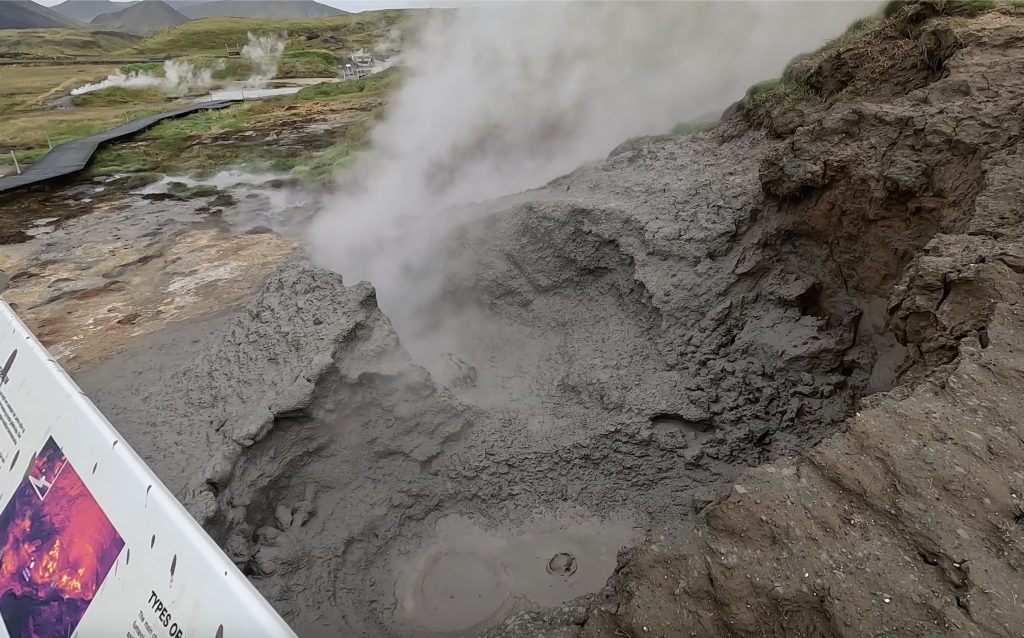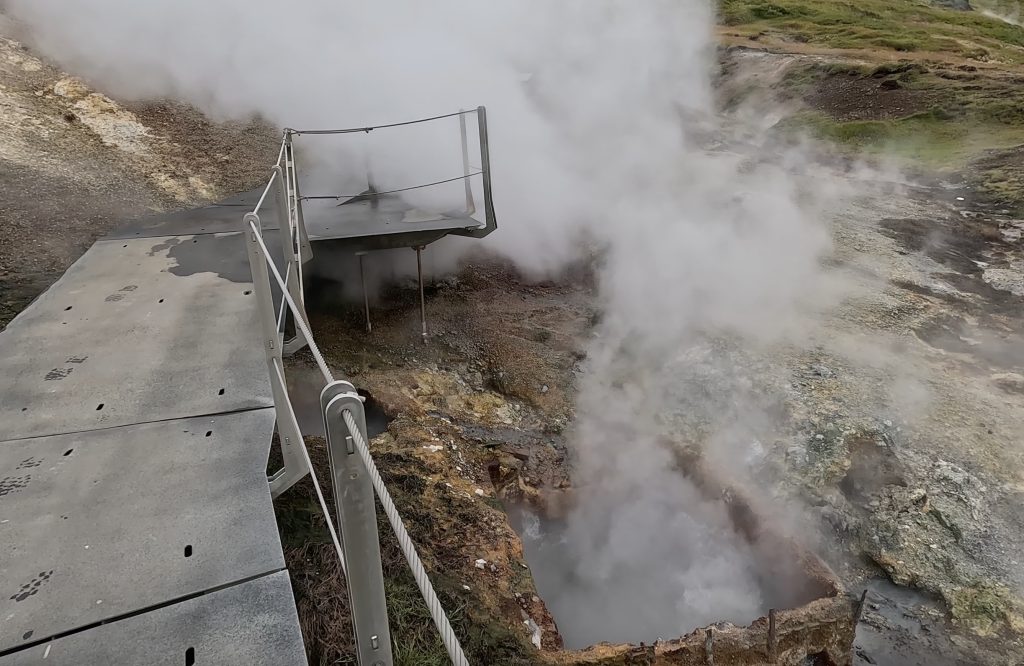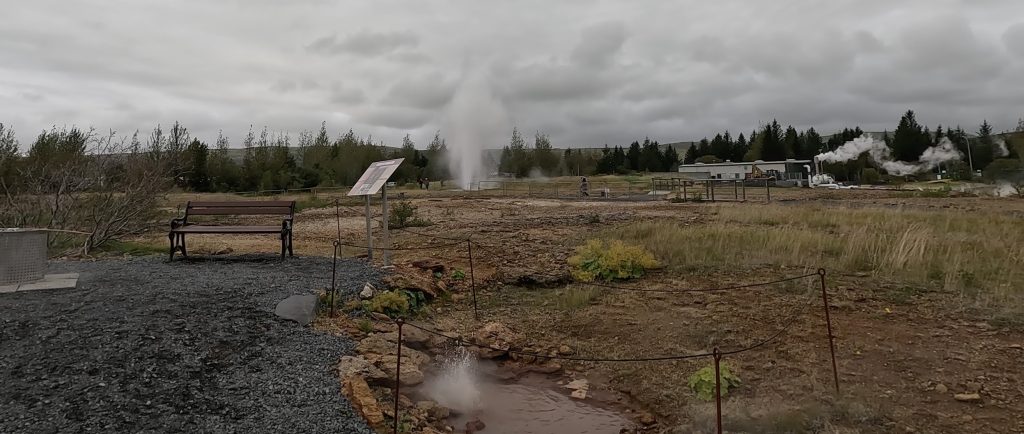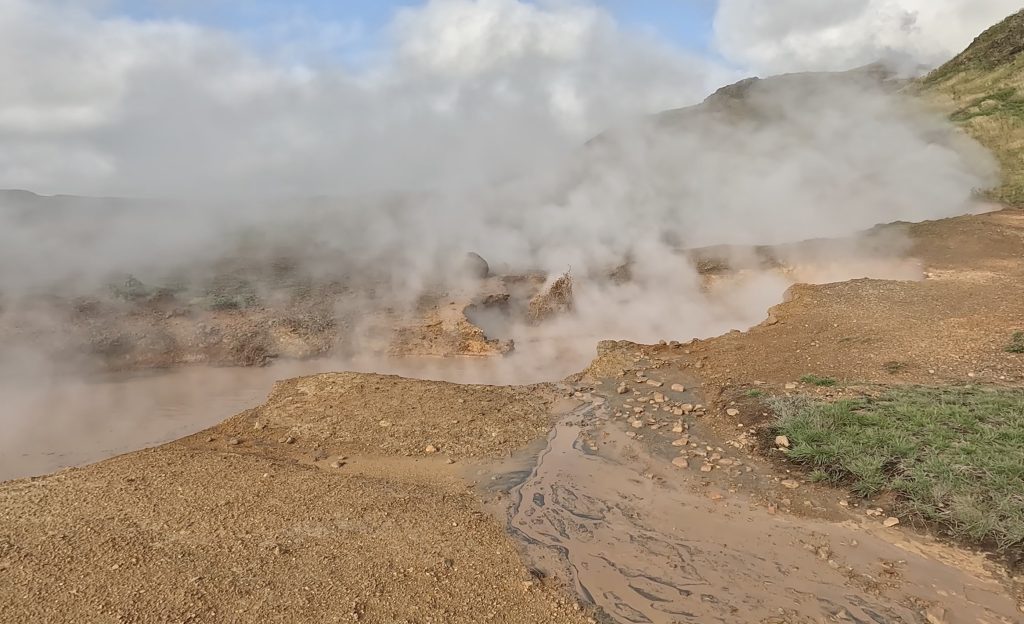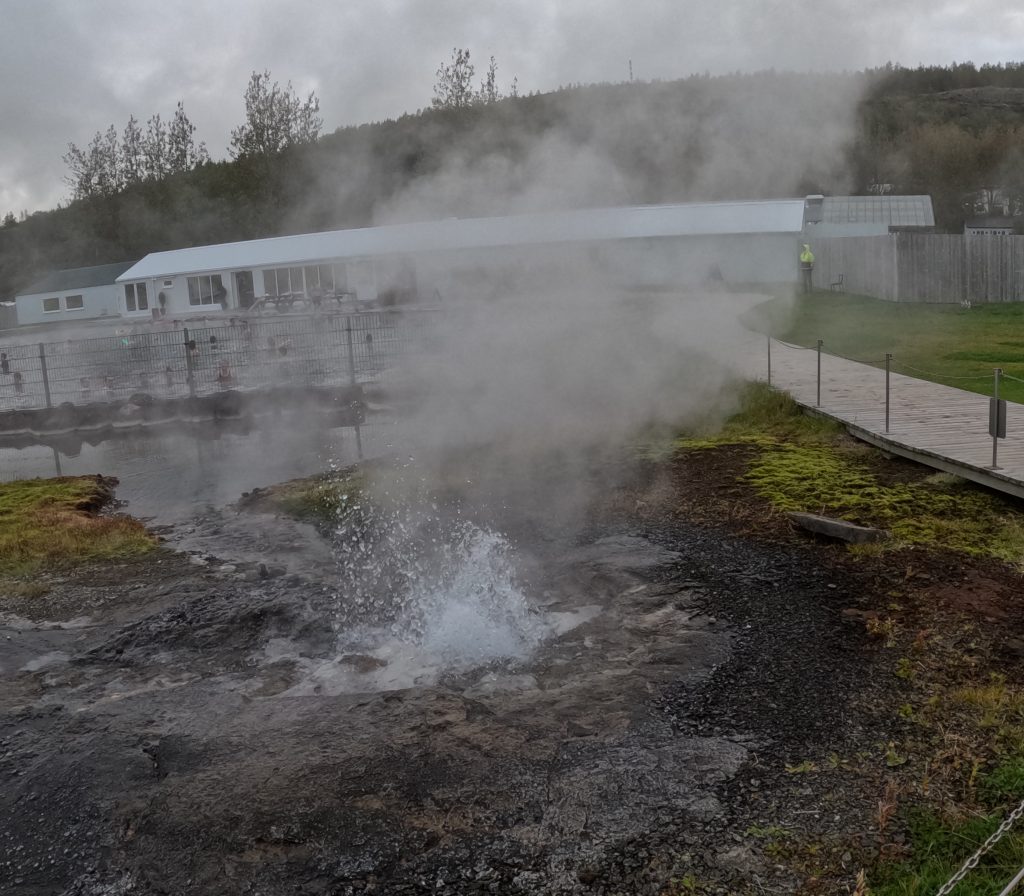The first stop of the day was at Hveradalir, located to the north of Route 1 west of Hveragerði. This is an area of frying pans, mudpots and fumaroles with a walkway through it on the edge of a well developed geothermal powerplant.
The walkway crosses a lagoon, which the information sign says is artificial. After that, the next main attraction is a large mud pot upslope from the walkway which has built a several meter high cone,and was in the process of occasionally flinging mud onto the walkway. Beyond that is a powerful fumarole and an eruptive feature. The latter is active inside a stone and cement box with a hole in the side which allows water to escape the box. The fumarole is loud, and I couldn't see any actual steam coming from it, a sign that it is highly superheated. To get to the end of the walkway requires passing through the fumarole' steamcloud, a slightly scary experience.
On the way back along the walkway, at the point where the walkway first crosses over the lagoon, we noted a small vent bubbling away. This activity was intermittent, and every minute or so it would increase to the point some splashes were getting to about 5cm high. Then the activity would cease for a few tens of seconds, only to start the cycle again.
The next stop was the Hveragerði Geothermal Park. I wasn't expecting much here as I knew about the changes after an earthquake 15 years ago when most of the pools empty and dried up. What I didn't expect was that there is an active, erupting feature there. It's probably artificial, and erupting borehole, but it is still a fascinating feature with a distinctive and unique eruption.
We saw four eruptions over about an hour period, the interval was about twenty minutes. There's just some rocks piled around the vent, probably the remnants of a borehole, and there is splashing about 1/2 meter high begins about five minutes after the eruption. This activity gets a bit stronger over then next fifteen minutes, but not by much. Suddenly, one of the splashes triggers an eruption, which lasts at most five seconds. There is a roar as water is expelled up to ten meters high, and just as suddenly drops down to nothing. According to the little map we got at the entrance, this is Eilifur Goshver/Eternity Geyser.
There's a second active feature, a small pool which splashes away and is located next to the cafe/greenhouse entrance to the park. It looks like it's probably a natural feature, as I didn't seen any evidence of concrete or other building materials around it. When I recorded the last eruption we witnessed, I decided I wanted a distant shot, so was standing about 25 meters from the Eilifur with the small pool in the foreground. As the eruption started, the pool suddenly increased in activity and force and the splashing was well over a meter high for just as long as the eruption lasted. Then it reverted back to its previous splashing.
The next stop was a thermal area up on the hillside north of town. Over about 100 meters is a line of mudpots and acidic springs. At the northern end are signs with names for some of the features: Reykjamóri, Leirgerður and Skjálfti. Based on these, I think it was Skjálfti that was having eruptive episodes. This feature contained opaque, brownish red water which was boiling up and splashing from every locations. Every minute or two the activity would get stronger in one of the vents, and the splashing would be one or two meters high.
The final stop of the day was to see Littli Geyser at Gamla Laugin/Secret Lagoon in Fluðir. It, along with several other boiling springs, are on the grounds of the spa and provide some of the waters used.
The vent is maybe 25 cm across, and there are two deeply incised runoff channels leading from it. Most of the time there is water flowing down one of these channels, and the vent is in a constant agitation to maybe 25cm high.
Based on an hour and a half's observations, Little has three sizes of eruptions. The minor is shorter and not as tall, and the vent almost immediately resumes overflow and splashing. The larger eruption lasts longer, is taller and the vent drops below overflow and refills over about a minute. The major eruption is the tallest and longest, with some of the eruption getting to about four meters high. After the eruption the vent drains with the usual array of sounds.
All but one series consisted of two minor eruptions about two minutes apart, and then two minutes after that, a major eruption. It takes about five minutes between a major and the next minor. The time we saw the intermediate eruption, it was after the first minor eruption, and it was followed by another minor and then a major.
Near Litli are some deep boiling springs. One had collapsing bubbles at the bottom, maybe 1/2 meter below the surface. There's also another boiling spring, Vaðmálahver between the spa and the Litlà-Laxa River.

